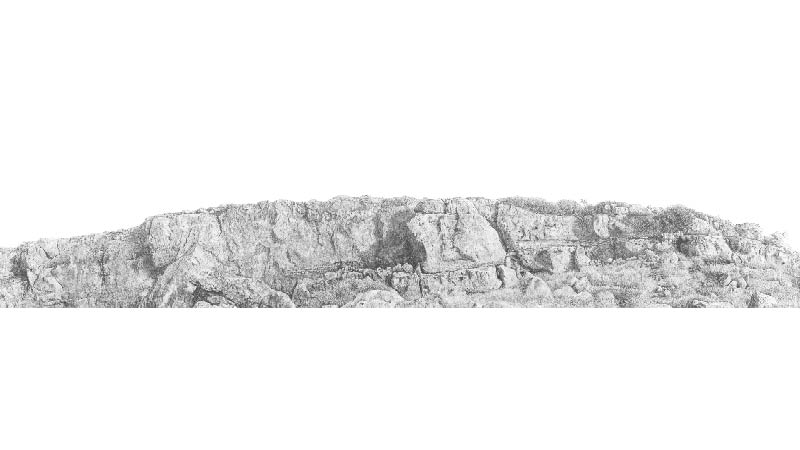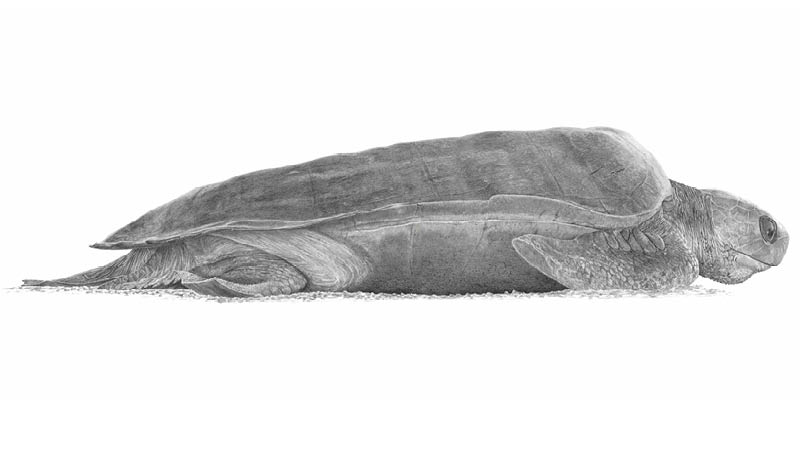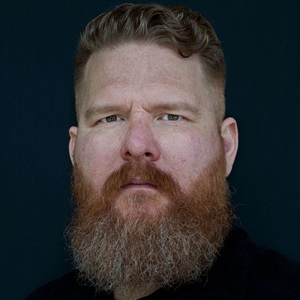Ross Potter
selection of work includes:
En Route to Obe’s Beach | John Wayne Country | Perentie | Flatback Turtle | Dwarf Bearded Dragon | Birds | Marsupials
Ross Potter was commissioned to create a series of highly- detailed and realistic renders of the various fauna and wildlife habitats that exist on Barrow Island, celebrating the ongoing conservation work done under the Harry Butler Legacy Project and Chevron’s commitment to preserving the pristine state of this Class A Nature Reserve.
Through first-hand experience exploring Barrow Island and using many tools, including on-site sketches, photography and research documents, Potter’s drawings focus on the characteristics, forms and textures of the island’s wildlife. His highly accomplished works not only reveal the beauty and magnificence of Barrow Island’s denizens but also draw attention to the ongoing work and research of the Harry Butler Institute.

about the artwork
En Route to Obe’s Beach
“Driving around Barrow Island, I quickly discovered that there is no shortage of views of spinifex, the clumping grass covering most of the Island.
It was a welcome scene when after driving for what felt like miles of the same views, the landscape suddenly shifted and new shapes drew my eyes.
I was really taken by this canyon, the way the land formation criss-crosses the horizon all the way to the ocean.
We passed this place while on the way to Obe’s Beach and I couldn’t help but ask to turn around so I could capture this breathtaking view. Looking over the valleys and spinifex, anthills and rocky rubble, when finally, the land dips low enough to give a glimmer of the ocean. It was a lovely place to stop and chat, and to take a moment to capture this part of the Country.”

about the artwork
John Wayne Country
“I visited this unique place early in the trip, to see the Green Turtles in action.
The little gully between the beach and the cliff-face was very well protected from the wind and made for some beautiful sightings of White-winged Fairy-wrens scurrying through the bushes, while over at the beach we could see the Green Turtles breeding and the Perenties waiting to poach their eggs. While we observed the turtles, a family of Eastern Osprey glided through the skies, in search of a good fishing spot for dinner.
All of this movement and life was happening around me, with this imposing cliff face as a backdrop.
We decided to visit here again later in the trip, and it was a magnificent sight to see the last rays of the setting sun as it hit the rocky wall.”

about the artwork
Perentie
“The Perentie, Australia’s largest lizard, are recorded on Barrow Island to reach a length of almost 2 metres. This top predator, often found on the beaches consuming turtle eggs and hatchlings, eats a range of other reptiles, insects, birds and mammals, as well as being known to also cannibalise their own species.
These strong and stoic creatures seemed to inherently know that they own the Island. They were regularly seen standing in the middle of the road, as though they knew we had no choice but to patiently wait for them to move on of their own accord. This behaviour, however, had a silver lining, as it gave me great opportunities to study the intricately detailed, individualised patterns on their skin.
While it was a welcome relief to have a subject that would stay still long enough to photograph, I was careful to keep my distance, after discovering they are known to contain venom and hearing stories of their nasty bite.”

about the artwork
Flatback Turtle
“I had some fantastic opportunities to spend time with Flatback Turtles on Barrow Island, including one morning, well before sunrise, when we headed out from camp to follow the turtle tagging crew. Off in the distance, we could see a few Flatbacks starting to crawl up the beach to lay their eggs, and then before we knew it, more seemed to come from everywhere.
Another experience, coming up to the end of the trip, was after we had made our last stop for the day at Mattress Point. Taking a peek toward the beach we were surprised that some Flatback Turtles were already preparing to lay. Very cautiously, we walked down and waited to get a clear photograph of them as they emerged from the water. Once I had taken a few shots, we waited for them to finish laying (so as not to disturb them), then walked back up the ridge to sit and watch from above.
The view from the ridge, while waiting for the sun to set, was such a highlight of the trip. There were Euros hopping past, while Woodswallows flew around us, and a Perentie lurked patiently in wait for the Flatbacks to leave their eggs unattended.”

about the artwork
Dwarf Bearded Dragon
“We were treated to many sightings of the variety of smaller reptiles on Barrow Island, many of which were very challenging to see. With their size and colouring, they blended so well into the landscape, making them less of a target for predators… myself included!
It was on my last day of the tour that I had a very close view of this Dwarf (Western) Bearded Dragon hanging from a thin branch.
Having spent time with some of the other larger and medium-sized reptiles on the Island, I decided to focus one artwork on examining one of the smaller species. While around 40 centimetres in length (including its tail), the Dwarf Bearded Dragon is still quite large in comparison to some of the tiny species on Barrow Island, such as the Geckos, however, I was drawn to the rough beard of spines and the way it lounged on the branches of this tree.”

about the artwork
Birds
“While experiencing the birds of Barrow Island, I was drawn toward the largest and smallest birds calling the island home.
Eastern Osprey nests were easily visible along the coastline, allowing us to watch them tend their young, and bathe on the beaches, making them one of the easier-to-spot birds during my adventure. The impressively large White-bellied Sea-eagle gliding overhead, looking for lunch, provided me with humbling views of this magnificent bird as it soared above the landscape.
Among more challenging sightings was the Spinifexbird, notorious for hiding and waiting for threats to subside. I was fortunate to accidentally flush one from the spinifex, with it alighting long enough to photograph nearby. While not the smallest bird, the challenge made them one of my more memorable sightings.
My personal aim for the trip was to see the endemic White-winged Fairy-wren (subspecies Edouardi), perhaps now one of my rarest bird sightings, who is black, unlike his bright blue mainland cousins. As we explored the Island, listening to their calls, a combination of perseverance, patience and a dash of luck, led to this shy little species eventually making an appearance.”

about the artwork
Marsupials
“Although I had been told that there were many Euros on Barrow Island, it still surprised me just how many we saw. It felt like a whole new family of Euros was ready to greet us when we arrived at each corner of the Island. I was also taken aback at how approachable the Barrow Island Golden Bandicoots were, always sniffing around camp looking for a bite to eat. They felt very familiar to the Quokkas on Rottnest Island and I must admit I did get strange looks when I was set up, with my telephoto lens, to photograph them by the mess hall at dinner time.
While exploring the Island at night, a whole other world opened up and we were able to spot local night dwellers, such as the Barrow Island Boodie and the Spectacled Hare-wallaby. Armed with our headlamps and cameras it was amazing to see the Spectacled Hare-wallabies rummaging around the shrubs. The Barrow Island Boodie, however, required a bit more expertise and some quick feet, as our guide was able to track one and locate it, as it sprung off into the dark, taking refuge in a small spinifex bush.”

about the artist
Ross Potter
Kamilaroi People | Born Meeanjin | Brisbane, Queensland
Lives and works Walyalup | Fremantle
Ross Potter is undoubtedly an extraordinary artist as his works are picture-perfect in every detail and then elevated to the extraordinary as we encounter his subjects through his breathtaking observations.
Deceptively simple, he works primarily with graphite pencil on paper to produce these highly detailed representations of animals, minerals and vegetables. The size of available paper is overcome as he ‘builds’ his works, relative to his subject, and then assembles these as one work.
By focusing on the complex features of his subjects, Potter brings the abstractions of reality to our attention, while telling compelling stories of everyday life and his own personal experiences.